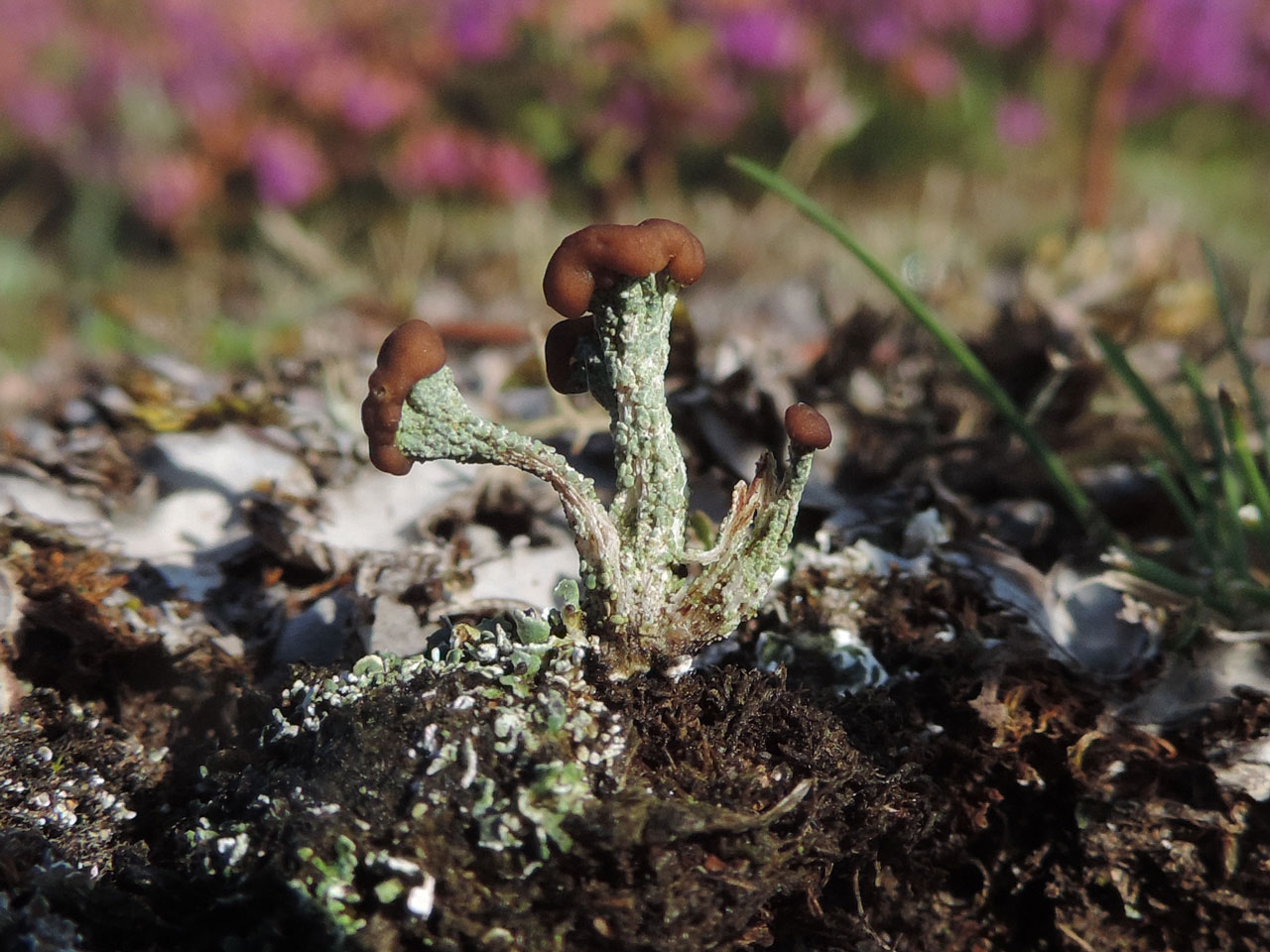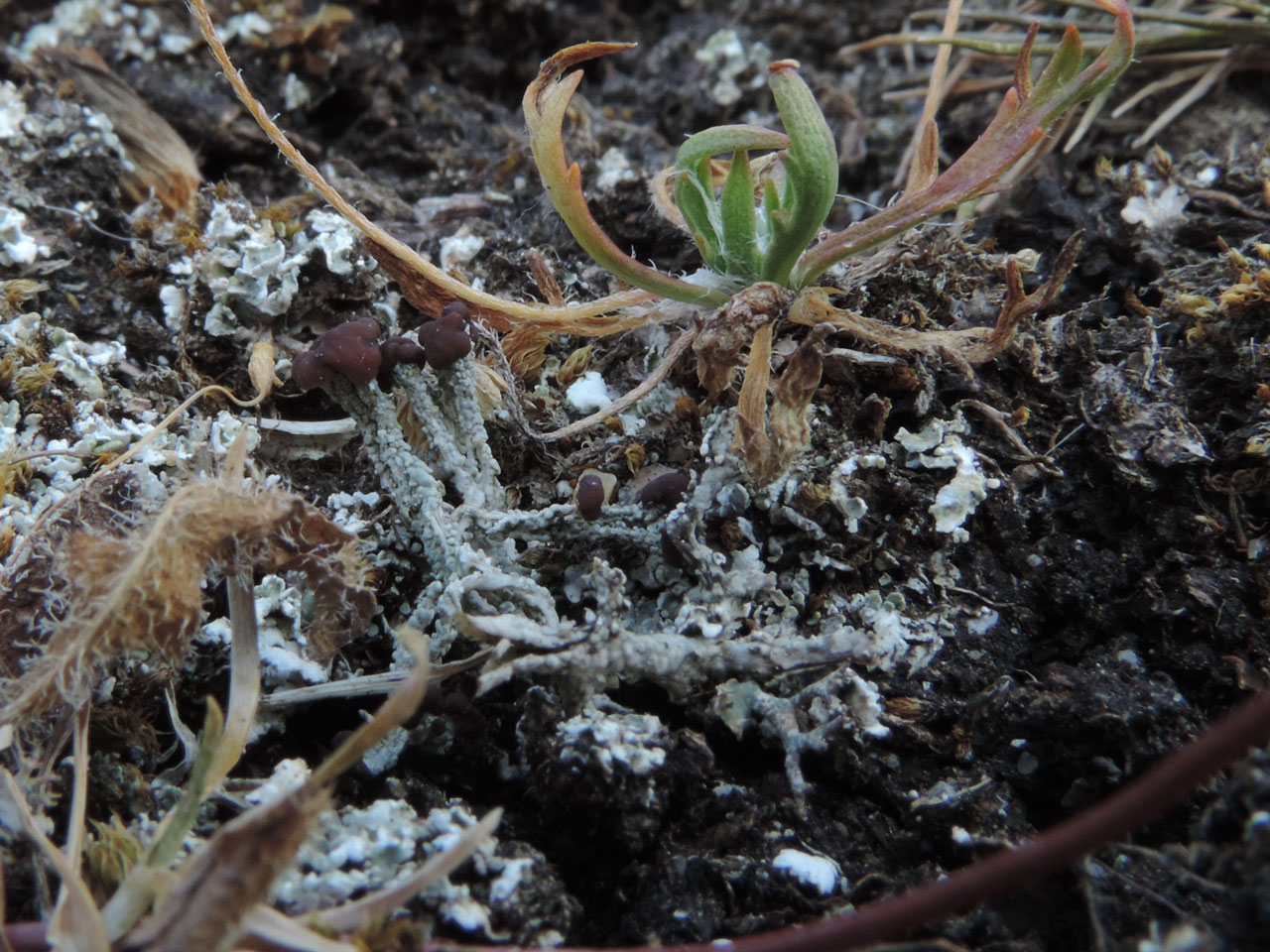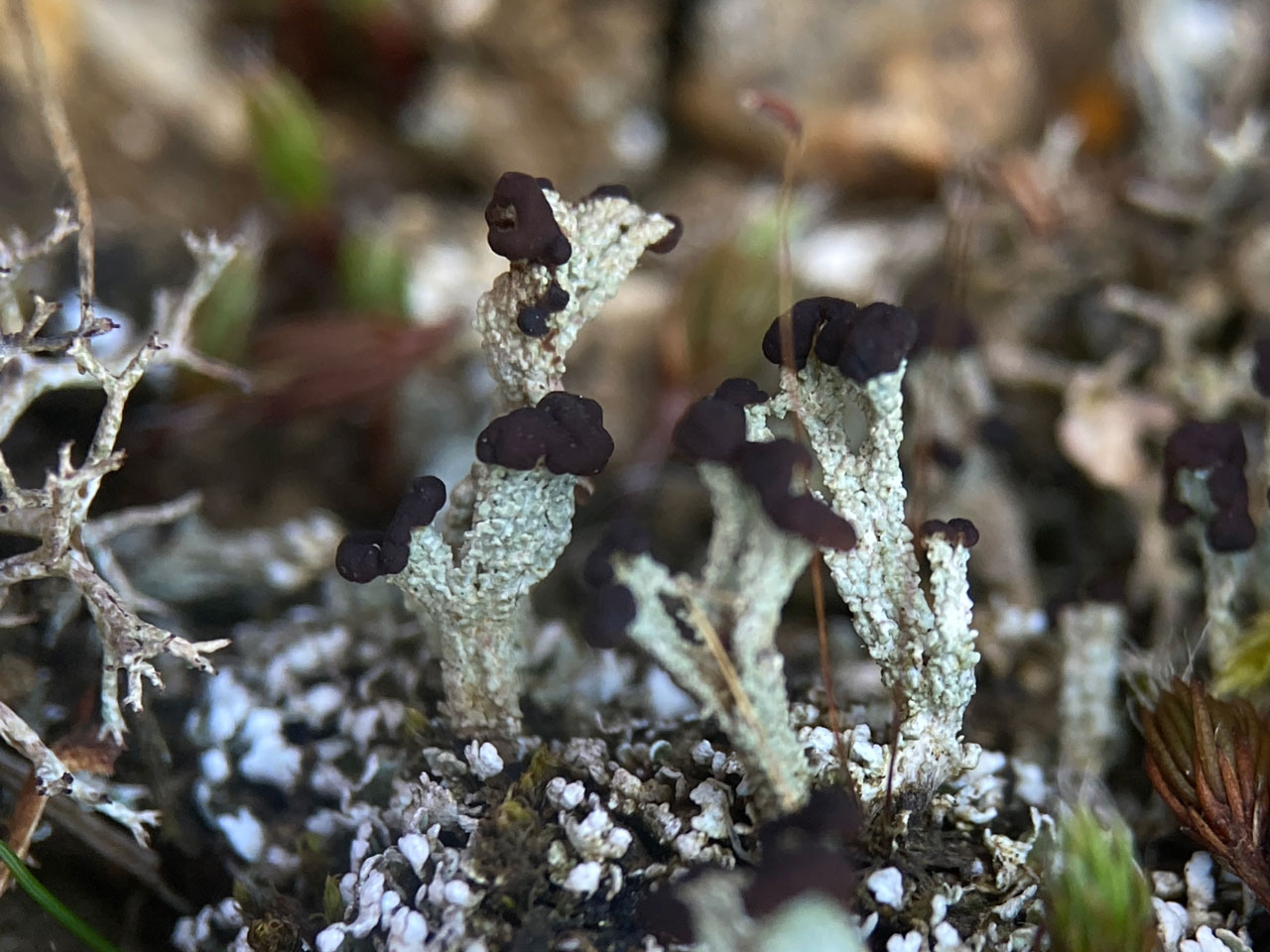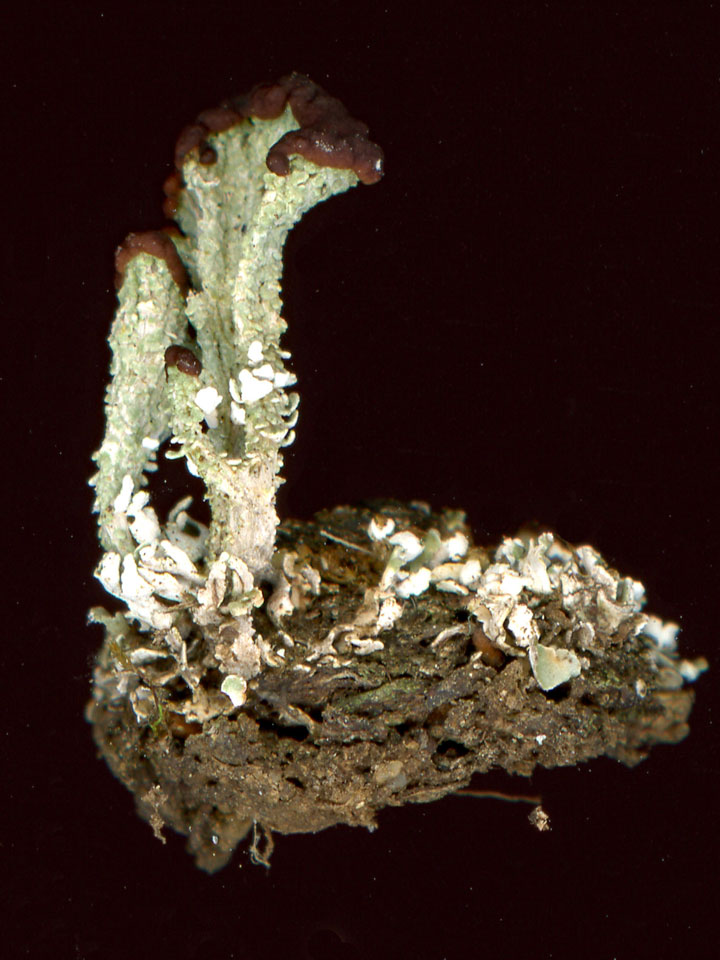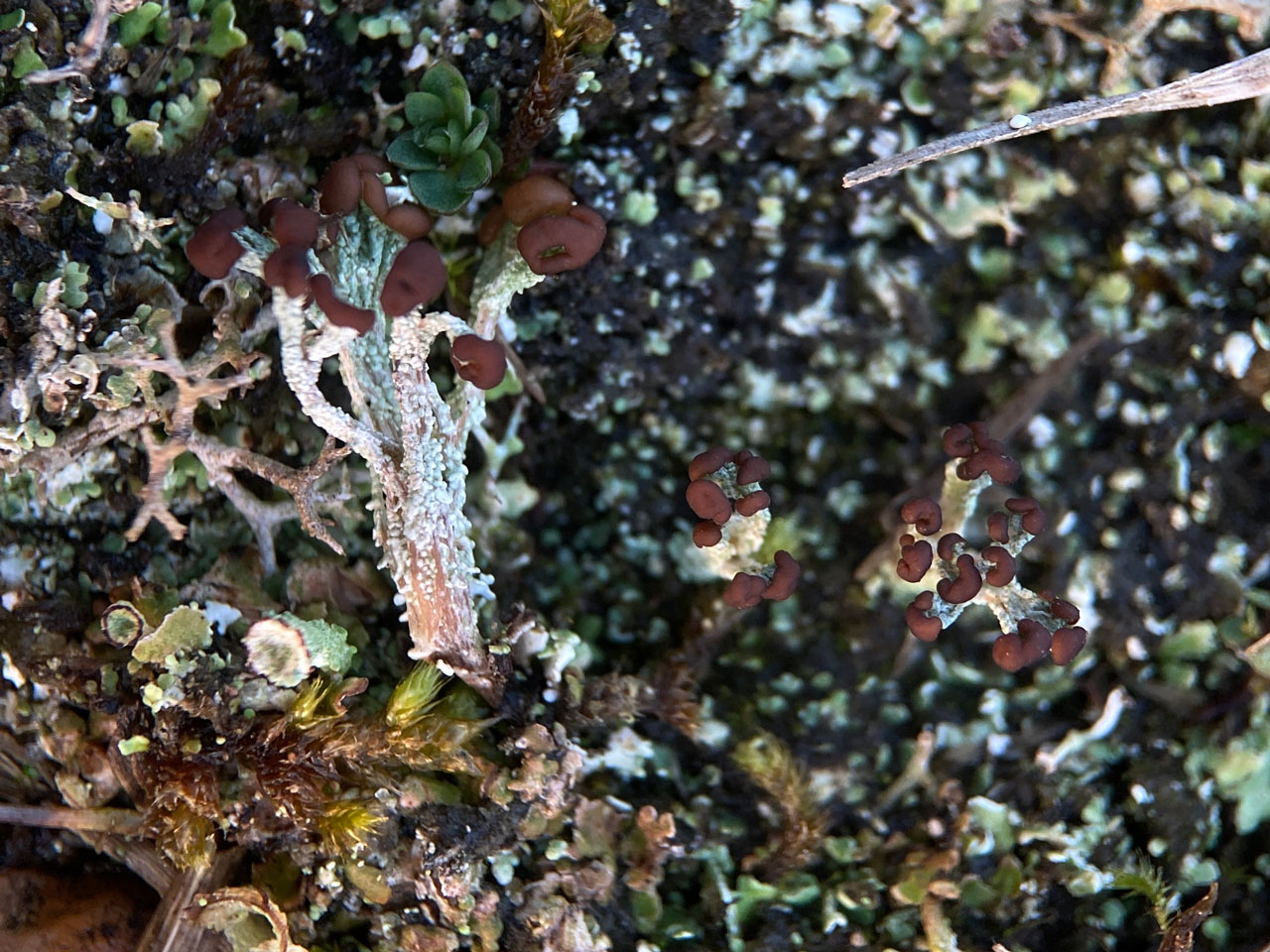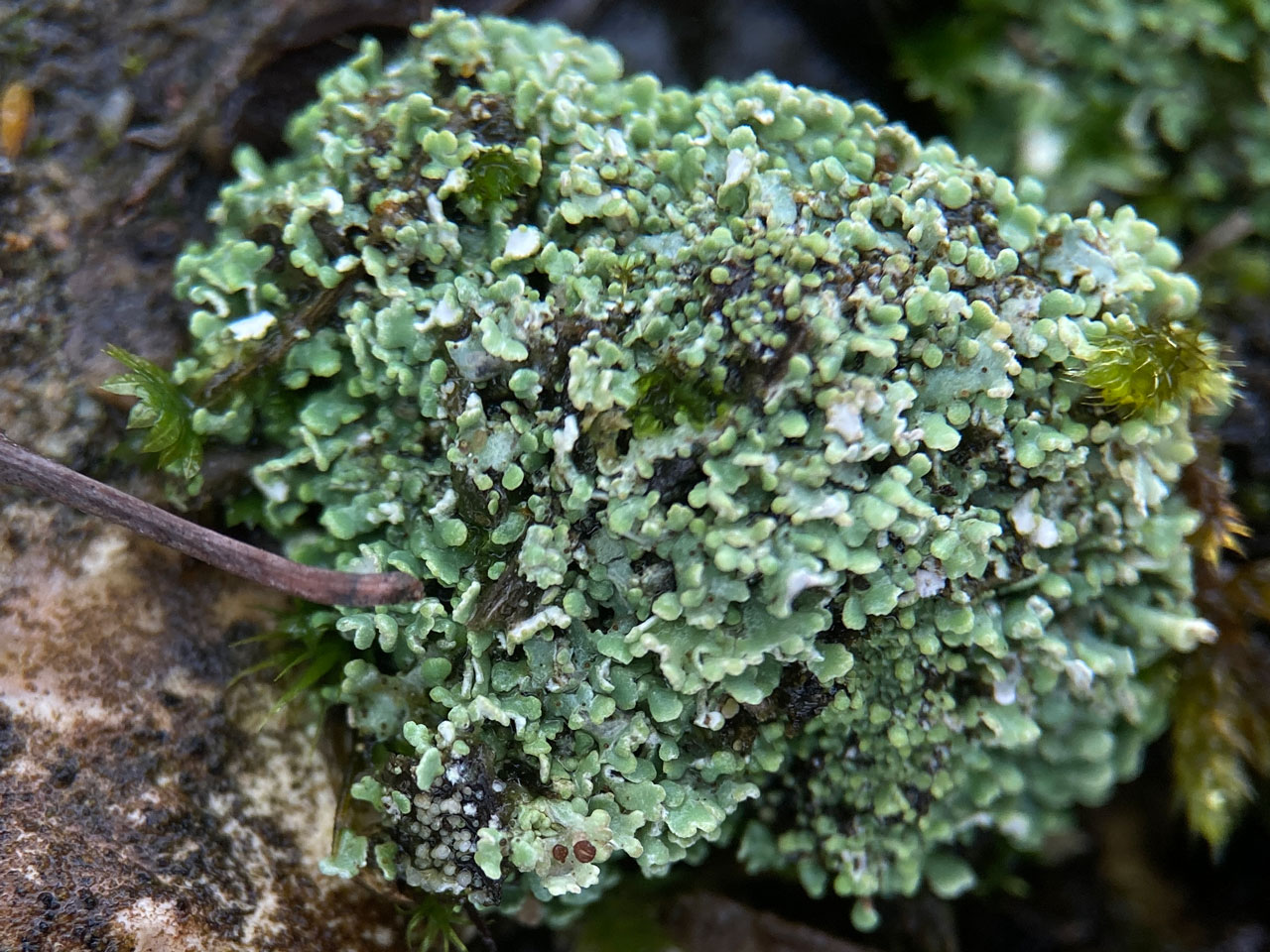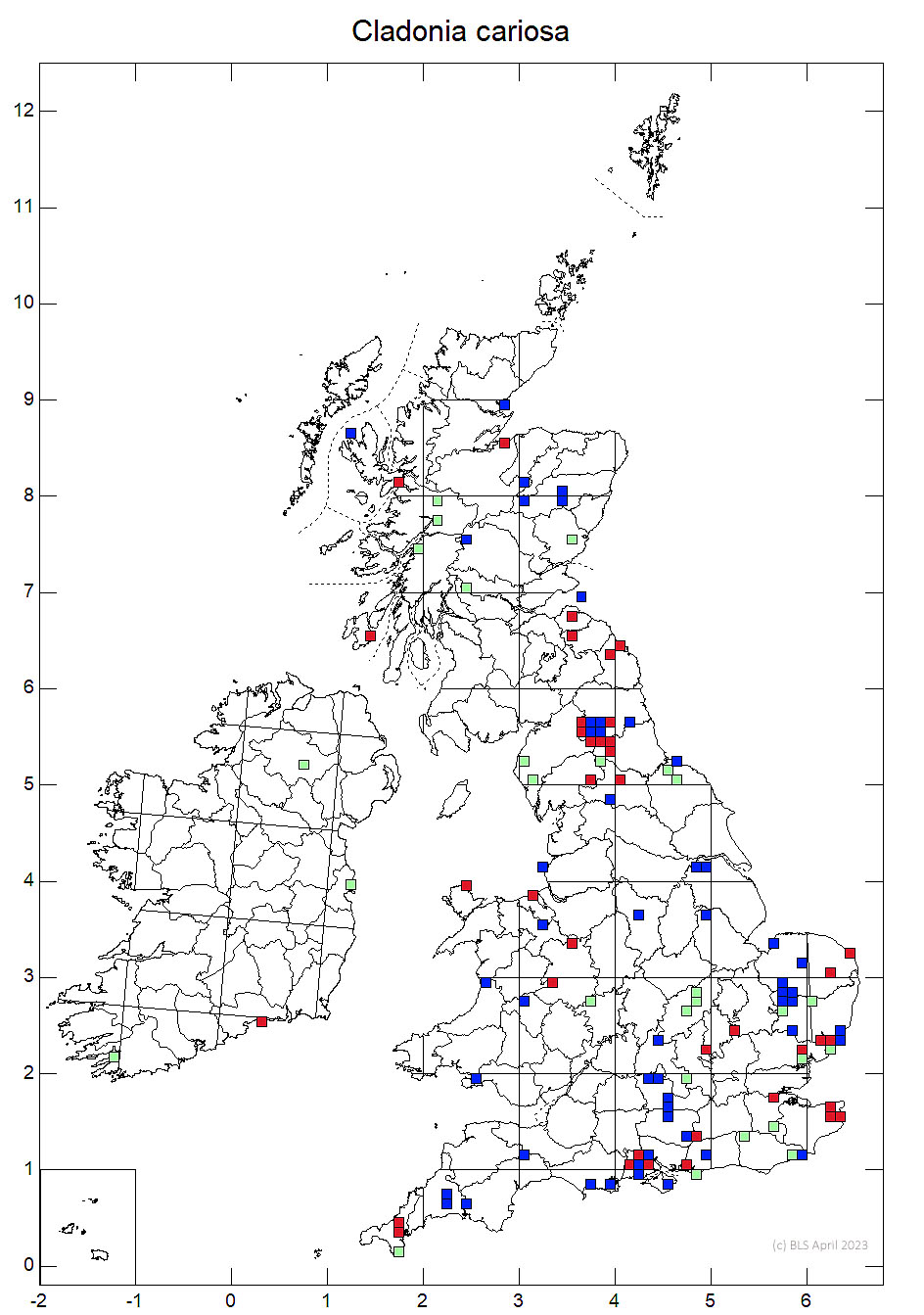Cladonia cariosa
A small distinctive Cladonia of moderately base enriched, but not strongly calcareous, disturbed soils. Readily recognised by the longitudinally multi-fissured podetia and large, clustered, terminal brown apothecia. Typically an early succession species in post industrial sites and heavily disturbed heathland.
Podetia 0.5–1.5 (–2) cm tall, grey-green, sometimes tinged brownish; scyphi absent, often sparingly branched above, the surface partly decorticate, distinctly longitudinally fissured with large, gaping cracks, often net-like, ± covered with numerous small corticate granules, sometimes with scattered squamules; soredia absent. Basal squamules mostly rather small, 1-3 mm long, ± erect, the margin entire or incised, with dark brown pycnidia on the upper surface, often grey-tinged below. Apothecia usually abundant, dark brown, at apices of podetia and branches, usually larger than the width of branches, often clustered and ± corymbose. Pycnidia, small, black and spherical on the upper surface of the squamules Three chemotypes occur in Britain and Ireland: C–, K+ yellow, KC–, Pd–, UV– (atranorin), widespread but local; C–, K+ yellow, KC–, Pd+ rust-red, UV– (atranorin, fumarprotocetraric acid), rare; C–, K± yellow, KC–, Pd–, UV– (atranorin, rangiformic acid), very rare.
Readily recognised by the longitudinally multi-fissured podetia and large, clustered, terminal brown apothecia. C. symphycarpa is similar but has larger squamules and broader podetia (which are rarely seen), and tends to occur on more strongly calcareous substrata.Sterile squamule mats occur but are difficult to separate from juvenile C. rangiformis squamules which often accompany C. cariosa. See also the very rare Cladonia peziziformis, which is always K– and Pd+ rust-red.
In disturbed ground especially where moderately base enriched but not strongly calcareous. Disturbed heaths, especially where former WWII air fields have left the heathland soil mixed with broken concrete, mine spoil-heaps, gravel pits and other post industrial sites; rare but widespread. An early succession species that can be abundant shortly after disturbance but then declines, although persistent at low frequency if there is enough small scale disturbance. Its scattered distribution and appearance in isolated newly disturbed sites suggests good long distance dispersal abilities.

Records are thinly scattered throughout Britain, but with local concentrations, as in the N. Pennine mine field. The records are most frequent in the south east, but these show a wide range of recording dates, typical of a short lived pioneer ephemeral. Very rarely seen in Ireland.
The status of short lived pioneer ephemeral species with good dispersal abilities is difficult to assess; local losses as habitats matures are to expected, but the species could be threatened by lack of large scale disturbance followed by abandonment. For instance it would not be favoured by policy to rapidly restore post industrial sites to closed vegetation.
Britain: Notable
Wales: Data deficient
Pino-Bodas, R., Sanderson, N., Cannon, P., Aptroot, A., Coppins, B., Orange, A. & Simkin, J. (2021). Lecanorales: Cladoniaceae, including the genera Cladonia, Pilophorus and Pycnothelia. Revisions of British and Irish Lichens 19: 1-45. Link
Text by Neil A Sanderson, based Pino-Bodas et al (2021)
